I’ve always loved Sydney’s amazing ocean rock pools. Once you see them, you will too.
Each rock pool is built to conform to its surroundings, blending into the coast, whether it be a rocky headland or a sandy beach.
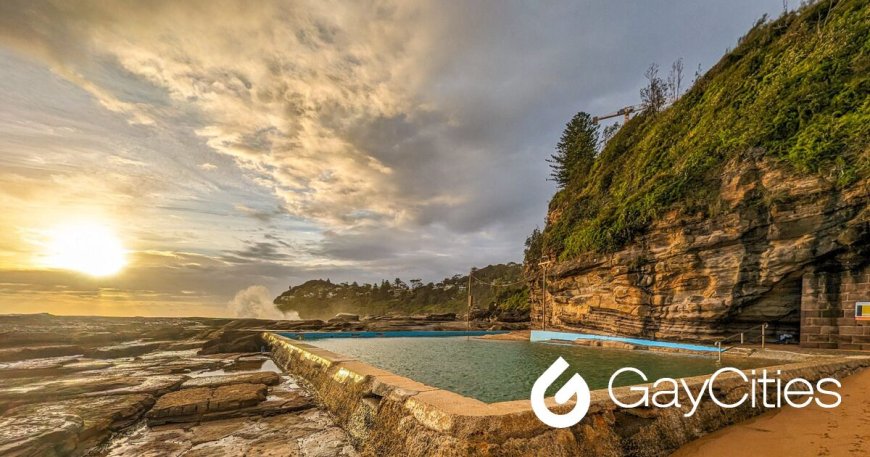
In 1982, I was a high school exchange student in Cronulla, Australia. As a kid from Colorado, I had only seen the ocean once before, and I was dazzled by the waves breaking against the rocky shore.
But one thing didn’t make sense. It looked like there was a swimming pool right on the beach. It was filled with water and seemed to blend into the shore. Was it full of seawater?
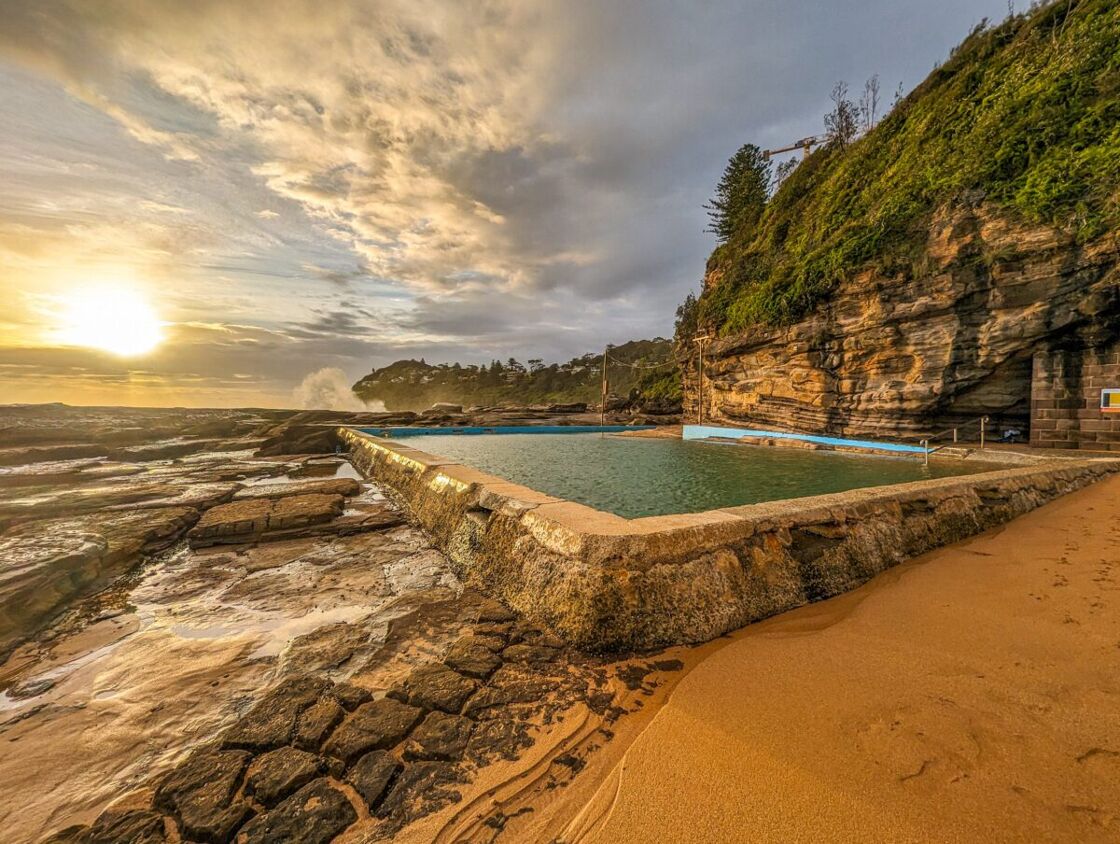
I asked Phil, the father of the family who was hosting me, what it was.
Pack your bags, we’re going on an adventure
Subscribe to our weekly newsletter for the best LGBTQ+ travel guides, stories, and more.
Subscribe to our Newsletter today
“That’s the Shelly Beach rock pool,” he explained. “It’s full of saltwater from the ocean. People swim in it.”
“But the ocean is right there,” I said. “Why do they need a pool at all?”
“The surf gets pretty big here. Plus, there are dangerous currents called rips. A rock pool protects you from all of that. Anyway, it’s an Australian thing. I bet you’ll like swimming in them.”
Phil turned out to be more right than he knew. For a teenager who had grown up in landlocked Colorado, I couldn’t get enough of that pool.
It also began a lifelong obsession of mine with Australia’s rock pools — also known as “ocean pools” or sometimes “baths.”
Last year, I returned to Australia for the fourth time, finally bringing Brent. And just like on my previous three visits, I spent hours swimming in the rock pools.
And this time, I also took pictures.
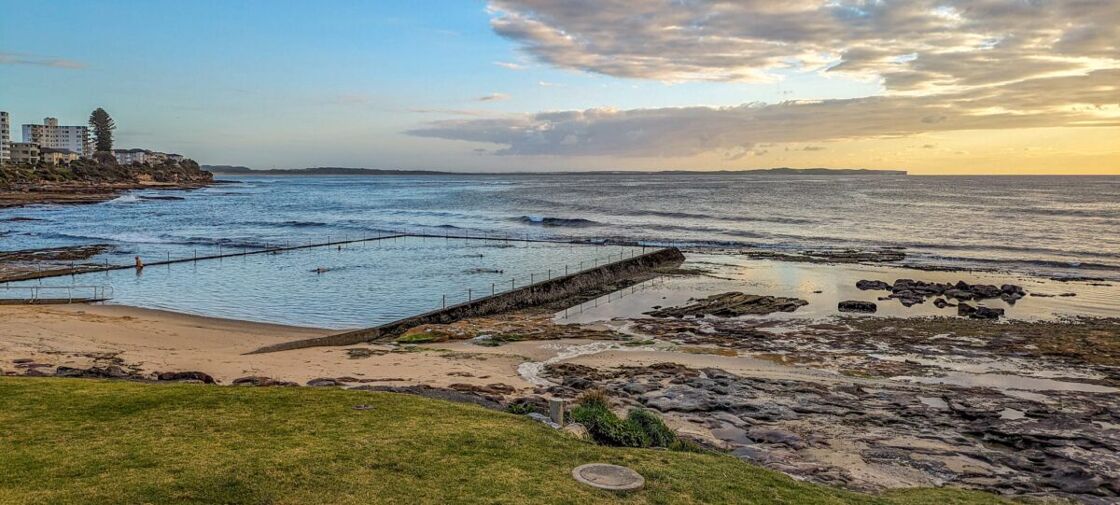
Why am I (and much of Australia) so crazy about rock pools?
No two rock pools are the same. That’s largely because each location is unique, and each rock pool is built to conform to its surroundings, blending into the coast, whether it be a rocky headland or a sandy beach.
Some rock pools are barely more than simple concrete walls arranged into three sections enclosing part of the sea, while others are hewn directly out of large shelves of rocks jutting out into the ocean. Meanwhile, others are so well-developed and elaborate they look essentially like a proper swimming pool.

Elaborate or simple, almost all rock pools offer fantastic ocean views and a refreshing place to take in that view. And they’re often built on sections of the coast that are, well, rocky, which adds to the scenic beauty.
As Phil told me all those years ago, rock pools really do protect swimmers from treacherous surf and currents. At the same time, they let everyone — kids and older folks alike — smell, taste, and feel that lively sea.
And they are replenished by water directly from the ocean — at high tide. Most rock pools have sandy bottoms, and you might even spot fish swimming inside — temporarily trapped, not unlike a natural tidepool.
And yes, the occasional shark has also landed inside a rock pool.
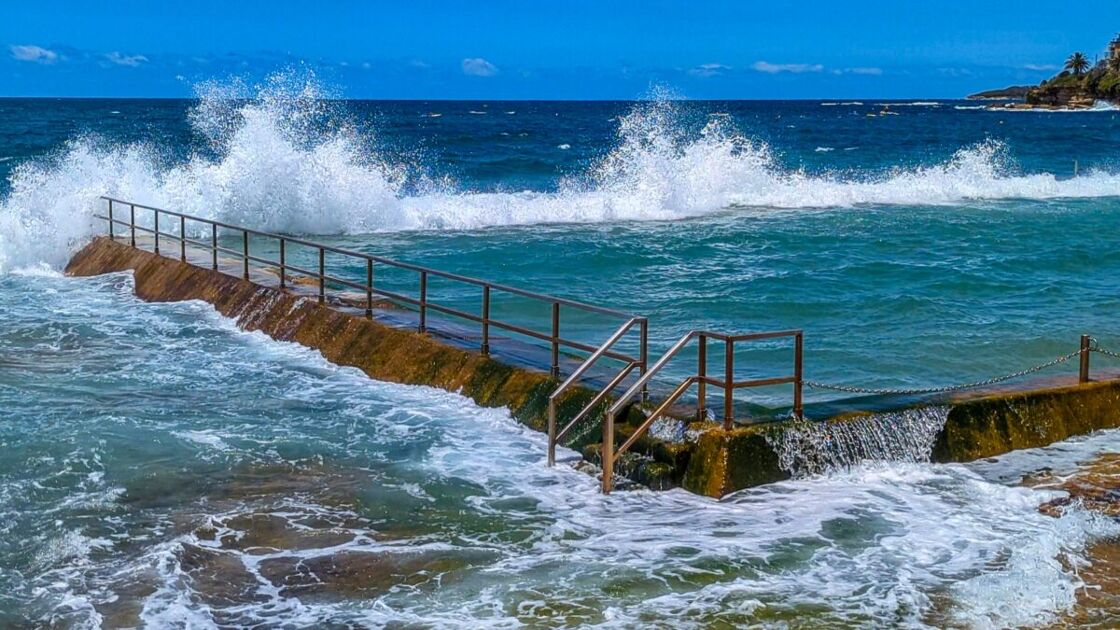
But for the most part, swimmers get a sense of what it’s like to swim in the open sea — without worrying about sharks or riptides.
I’ve spent a lot of time in Sydney, Australia, which faces east. This means rock pools are especially magical at dawn when the sunrise lights up the sky and water with streaks of orange, red, and purple. Think of it as nature’s light show.
During Brent’s and my three weeks at Whale Beach in northern Sydney, my absolute favorite activity was going for a swim at dawn. Many mornings, I had the place entirely to myself, with only a few seagulls sharing the tranquility with me.
Brent mostly slept through my early morning swims, although he occasionally joined me for my return visits in the afternoons.
I really am obsessed with rock pools.

Some mornings, the sea was almost completely calm as it reflected the rising sun. Other times, huge waves dashed against the rocks just beyond me.
One morning, the tide was so high and the surf so strong that waves broke over the side of the pool and kept crashing down on my head. Over and over again, I gasped in surprise, my ears filled with the buzzy fizz of the water churning around me.
But I always swam on undaunted.
Many rock pools have a heavy raised chain around the sides to keep swimmers from being washed out when the waves are too high or rough. One of my favorite memories as an exchange student was when a group of us teenagers ventured into a rock pool at a high tide coinciding with a very big surf.
That day, massive waves spilled over the outer rock wall, sending water rushing across the pool’s interior. But we were determined to reach the chain on that far wall, and eventually, we did.
Then we clung to that chain while waves crashed around and even over us. We held fast until a wave clobbered us so hard that we’d lose our grip, and the water carried us back toward the shallow end of the pool. Then, we’d repeat the whole process.
Of course, we laughed all the while.
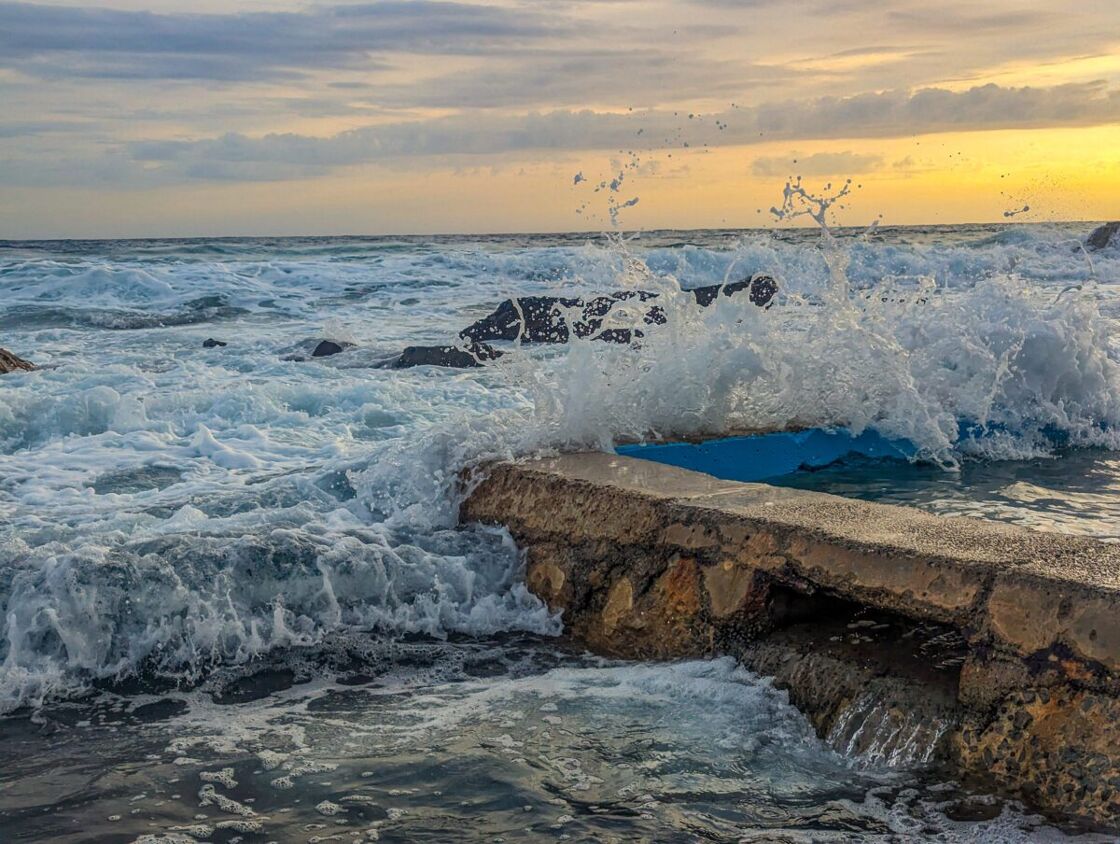
Rock pools have a long and storied history in Sydney and the entire state of New South Wales. Sydney itself has nearly three dozen pools, and the whole state has over a hundred.
While you can find the occasional rock pool in various places worldwide, only Cape Town, South Africa, has a sizable number — nineteen total. Like Sydney, Cape Town’s beaches have dangerous rips, sharks, and a rocky coast.
Australia’s first rock pool was built in Newcastle, NSW, in the 1820s. Convicts using pickaxes widened the natural opening so soldiers could safely swim in what became known as Bogey Hole.
Was this the world’s first rock pool? That might depend on how you define “rock pool.”

Rock pools initially became popular in Australia in the late 1800s, because at that point, public swimming during the day was illegal. However, private “baths” were allowed, so rock pools became an ingenious way to create a spot to swim safely and legally.
Swimming suits weren’t yet popular, so people often swam nude in segregated locations.
By the 1920s, mores had loosened, and swimming became more popular, especially with the advent of swimming “costumes.” But Sydney’s rocky coast remained a genuinely dangerous place due to, yes, rough surf, powerful rips, and those pesky sharks.
So rock pools remained popular, and even more were built during the Great Depression thanks to a government works plan designed to give people jobs.
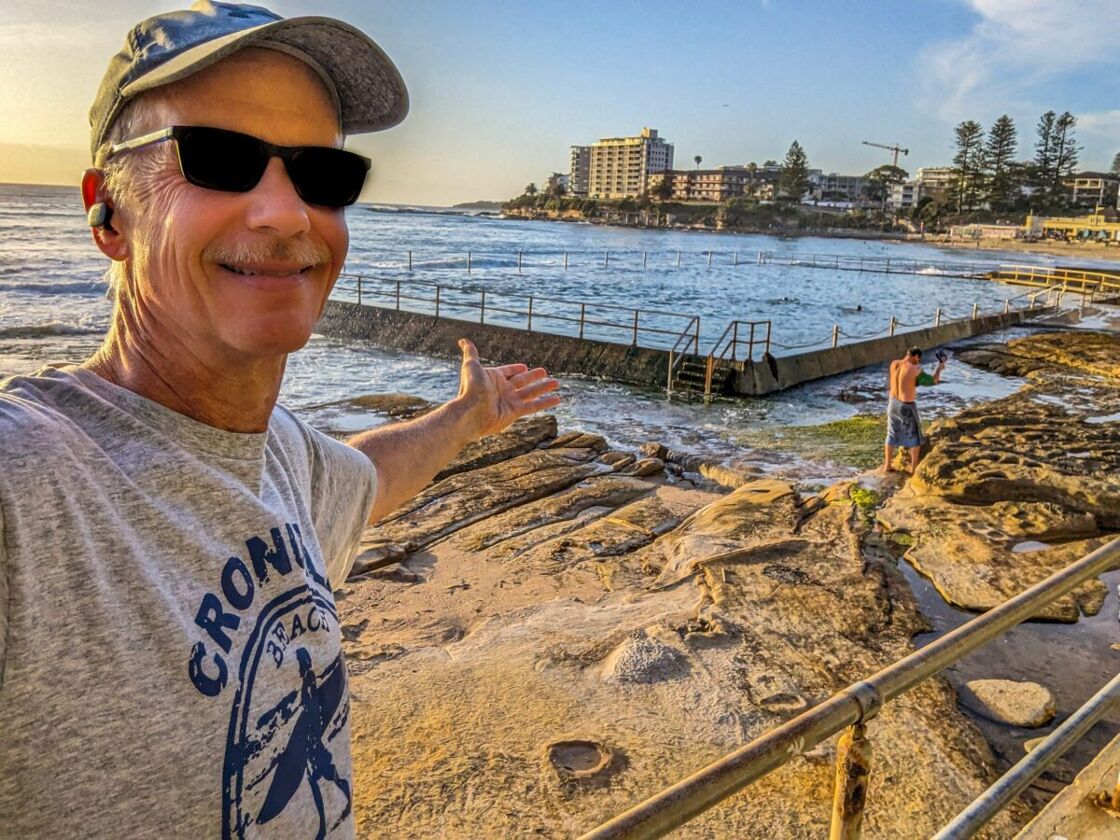
Rock pools also served as a way for Surf Clubs — community-based organizations dedicated to water safety — to train lifeguards.
Today, rock pools often serve another community function: as homes to unofficial swimming clubs, as I discovered one chilly morning while out walking in Cronulla. I’d gone down to the Shelly Beach rock pool to snap some photos when I noticed a small yellow building with a sign reading “Home of the Brass Monkeys.”
How the heck have I never noticed this building before? I wondered. And what’s a “brass monkey”?
I struck up a conversation with a couple of folks who had just gotten out of the nearby rock pool. (I talk to strangers a lot.)
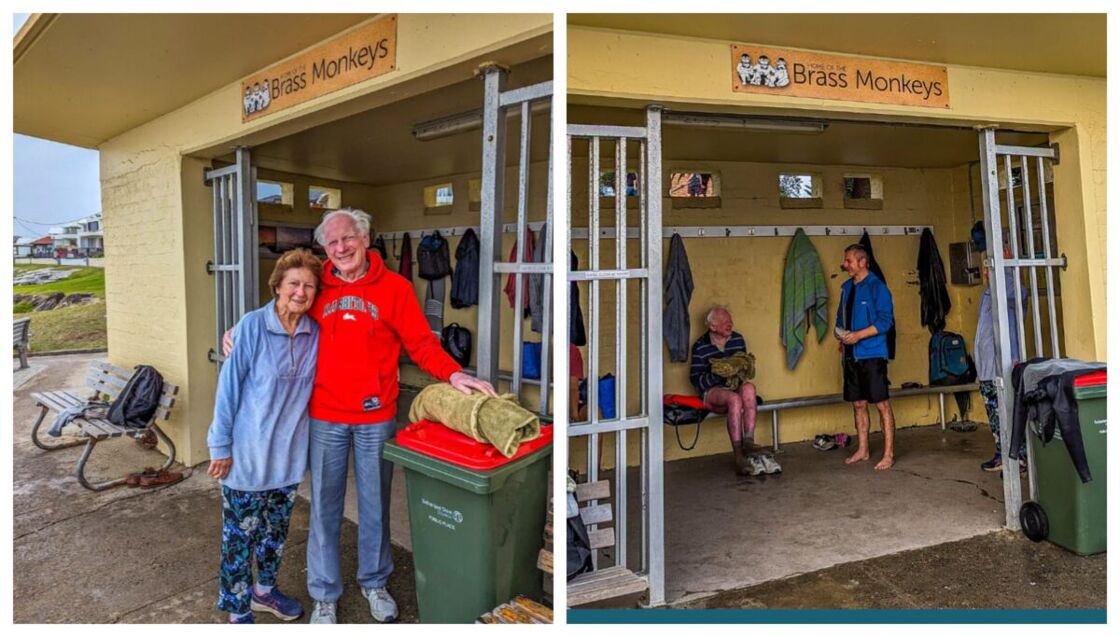
Owen and Angela, seen above, told me the Brass Monkeys was the unofficial swim club for the Shelly Beach rock pool. To become a member, you had to swim in the pool daily for a year.
Owen, the swimmer in the family, told me, “The water gets awfully cold here in winter. So you have to be pretty tough to make it.”
I finally remembered the saying, Cold enough to freeze the balls off a brass monkey. Now I understood the group’s name, and it made me smile.
They showed me a sign dedicated to a now-deceased member who had swum in the rock pool almost every day for nearly fifty years.
“You should have a go yourself,” Owen said. “It’ll wake you up.”
Since no part of me is made of brass, I laughed and said, “It’s too cold today for this wimpy American.” Then I walked on.
I may not be as intrepid as the Brass Monkeys, but I’ve loved Australia’s rock pools my whole life, and as I write this article, I find myself asking why.
In the end, I think it’s because rock pools are a kind of nexus point, a magical spot where the land’s safety meets the ocean’s danger and mystery.
Plus, they’re just so incredibly fun.
Brent Hartinger and Michael Jensen, are a gay “digital nomad” couple traveling the world continuously, living in different countries for anywhere from one to three months at a time. Subscribe to their newsletter at BrentAndMichaelAreGoingPlaces.com for all of their travel tips and stories.

 Mark
Mark 





